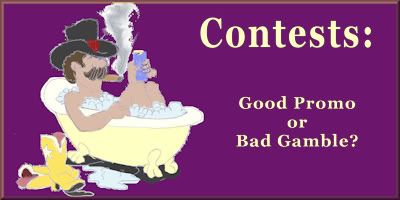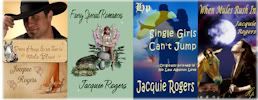Al Gore lives on my shoulder. He whispers in my ear while I’m doing laundry (“Cold water!”), driving (“Inflate your tires!”) or snuggling with my husband (“Turn off the light!”).
Al is never more disapproving than when a box of books arrives on my doorstep. “Oh, your carbon footprint!” Al sighs. “How much fuel was wasted shipping those books? And don’t get me started on the paper!”
Killjoy.
I recently silenced my inner Al by investing $359 in a new Kindle 2, Amazon’s next-generation e-book reader, beloved by Oprah and untold (because Amazon refuses to divulge the exact number) thousands of early adopters.
Here’s a review of the Kindle 2 from the viewpoint of a reader, not a tech wizard.
The Skinny: Product Specs
It’s nearly inconceivable that 1,500 books can fit onto the 10.2-ounce Kindle. At 8” x 5.3”, approximately one-third of an inch thick, the sleek, slender device easily slips into all but the smallest purses. The battery fully charges in three hours, and Amazon claims a single charge can last two weeks with the wireless radio turned off or four days with the wireless on.
The Kindle uses black “e-ink” on a gray display screen (slightly darker than the paper in a child’s coloring book) that is not backlit like typical computer screens. As a result, the Kindle has no reflected glare, is perfectly readable in full sunlight, and is far less likely to cause eyestrain than a computer. However, unlike a computer, the Kindle cannot be read in the dark.
A reader “turns pages” by pressing a button on either side of the device (a bonus for lefties). When “pages” are “turned,” there’s a brief flash as the e-ink repositions itself. Some find the flash annoying, but after a few minutes, I didn’t notice it. An indicator at the bottom of the screen tracks the reader’s progress through the book, graphically and as a percentage.
Purchasing Content
Currently, the Kindle Store sells over 250,000 titles, as well as subscriptions to major national and international newspapers, magazines, and blogs. Kindle content expands every day, as Amazon executes its ambitious plan to ultimately stock the Kindle Store with “every book ever printed in every language.”
The Kindle Store is accessed through the device’s wireless radio (no need for a computer hookup) anywhere there’s a Sprint wireless signal. Before purchasing a book, readers may download a free sample—usually a book’s first chapter or a complimentary two-week subscription to a periodical. A simple click completes the purchase, and the price is automatically charged to an Amazon-registered credit card. Within 60 seconds (usually faster), the wireless download is complete.
Kindle books cost about 50% less than a typical hardback (a savings of $10.00-$15.00) and 20% ($1.00-$2.00) less than a paperback. A randomly selected textbook (Mass Spectrometry by Jürgen H. Gross) sells for $57.56, or 42% less than its $99.00 cover price, leading one to wonder when e-readers will become the norm on university campuses.
Content Availability
How many of Kindle’s 250,000 titles are up your alley? It depends. A virtual stroll through the Kindle Store reveals depth in some areas, gaps in others.
The Kindle Store features 103 of the 111 books on the New York Times Best Seller lists, and the more famous the author, the more extensive the backlist. For example, Kindle sells 106 titles by horror king Stephen King and 63 by romance titan Nora Roberts, but the backlists for less well-known writers can be spotty.
Kindle’s library is by no means limited to contemporary writers. In fact, it’s hard to beat Kindle’s price for public-domain classics: the complete works of Shakespeare cost $3.19, all six Jane Austen novels only $1.59, and Dickens’s 16 novels, an astounding 99 cents. Who could resist that? Not me. Click!
Many popular craft books are also in Kindle format, including On Writing by Stephen King; Bird by Bird by Anne Lamott; Screenplay by Syd Field; and Fiction Writer’s Toolkit by Bob Mayer.
But if you’re looking for Writing the Breakout Novel; Goal, Motivation and Conflict; or the most recent edition of Elements of Style, you’re out of luck—for now.
Other features
Technology enthusiasts can spend hours poring over the Kindle User’s Guide (sensibly pre-installed on the device). But for amateurs like me, here are the highlights.
Adjustable type: Any book can now be converted into large print, thanks to Kindle’s six adjustable font sizes. This feature alone makes it worth a look for vision-impaired book lovers.
Text-to-speech: Kindle’s text-to-speech feature has inflamed authors and publishers, who fear it threatens audiobooks (and the accompanying royalties). They needn’t worry.
Since I have the maturity level of a twelve-year-old boy, I first tested the text-to-speech application on a sex scene in Sea Witch by Virginia Kantra. The scene was super-hot when I read it, but creepily bizarre when recited in the Kindle’s emotionless, robotic monotone. It was like getting an obscene phone call from Stephen Hawking.
In addition, Prof. Hawking sometimes can’t “read” the text properly (translating the honorific “Ms.” as “millisecond,” for example).
So relax, everybody. Kindle’s text-to-speech is okay in a pinch, but will never replace a well-performed audiobook.
Audiobooks and music: (Real) audiobooks from Amazon’s Audible.com and music files can be downloaded to a Kindle, although they consume an inordinate amount of memory.
Built-in dictionary: Highlight the unfamiliar word and—voilà!—up pops the definition from the free, pre-loaded dictionary.
Search functions: Type in a word or phrase and the Kindle provides a list of occurrences within the document. With a few additional clicks of a tiny toggle switch, readers can also search Google or Wikipedia for more information.
Other features: Kindle offers many other features, including the ability to save “clippings” from books and periodicals, type notes in the “margins” of documents, bookmark pages with a virtual dog-ear, and download Word, TXT, HTML, image, and pdf files.
Pros and Cons
Is the Kindle right for you? Consider the pros and cons. On the pro side, the Kindle is user-friendly (I downloaded my first book within five minutes of opening the box); ridiculously portable; and a pleasure to read, indoors or out. In addition, the Kindle Store mimics Amazon.com’s first-class purchasing experience, then does it one better with its ability to deliver a book in less than 60 seconds.
Other pluses: savings and environmental considerations. Between the $10-15 savings on hardbacks and $1-2 on paperbacks, serious buyers can break even in a year. And e-books are infinitely greener than conventional books, though the Kindle’s plastic casing and battery aren’t impact-free.
Finally, don’t discount the very real, if very shallow, cool factor. Whip out a Kindle and crowds gather (mostly men—hurray!).
Kindle cons include its steep price, its available-only-from-Amazon content, and, for readers who enjoy the feel of a new book and appreciate cover art, its rather joyless, utilitarian reproduction of the printed word. In addition, the virtual purchasing experience has its hazards: without an armful of books or an internet shopping cart tally to remind you of your literary gluttony, it’s easy to lose track of your spending. And if you share books, buying a Kindle will effectively end that generous and frugal practice.
A Final Note
I love my Kindle. I highly recommend it to anyone who buys lots of books, has back problems from lugging around their personal library, or covets cool technology. Of course, the Kindle isn’t the only game in town—Sony Reader aficionados extol its lower price, sleeker design, convenient touch screen and read-in-the-dark back lighting, among other features. So do your homework before making an investment in the future of books.
But if you do decide to buy a Kindle, use this link and Liberty States Fiction Writers will get a $35 referral fee for each Kindle purchased!
Liberty States Fiction Writers Bookstore
And one more thing:
As of this writing, An Inconvenient Truth is not available on Kindle.
Your move, Al Gore.
Questions about the Kindle? Thoughts about the future of e-books? Leave a comment and let me know!
Carolyn Martin is a former senior communications executive for a Fortune 100 company. Now a freelance writer/editor and pre-published author, she’s catching up on twenty years of deferred reading.


